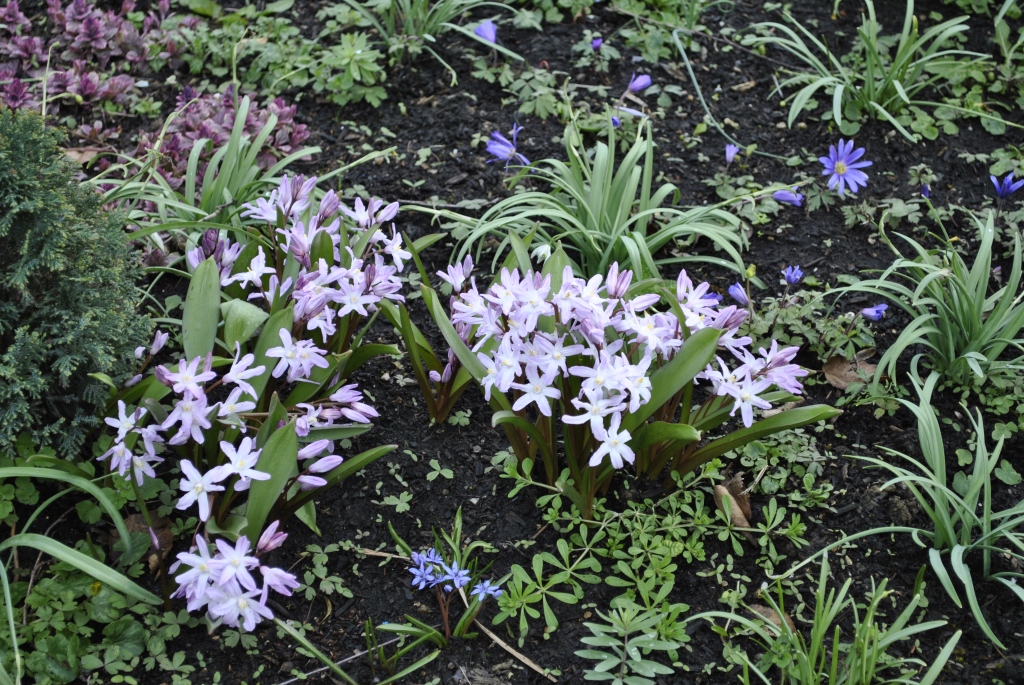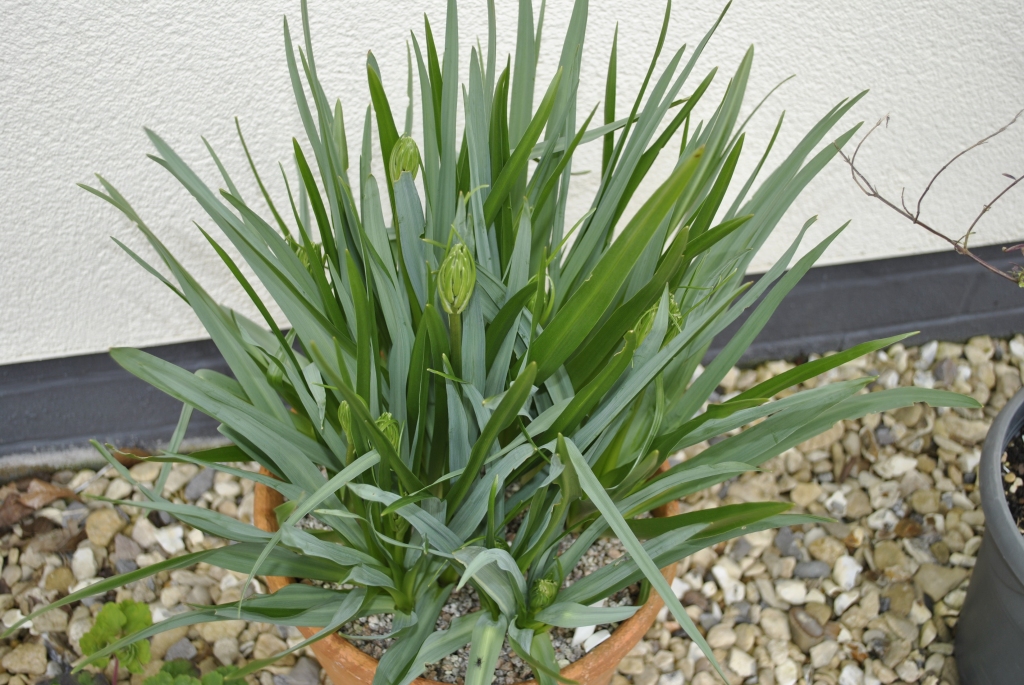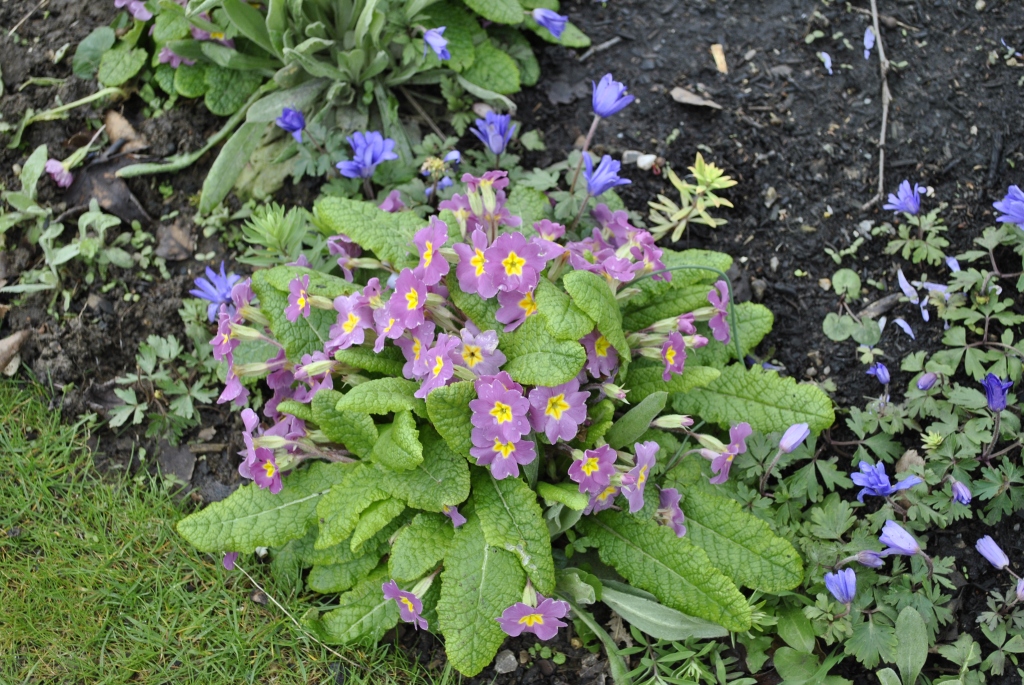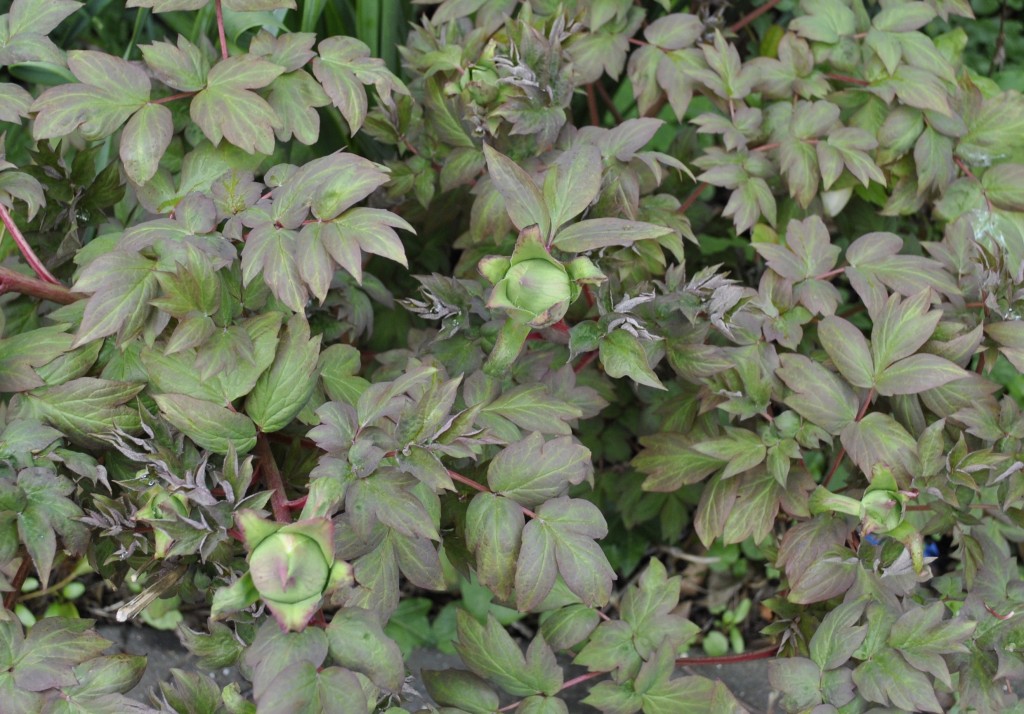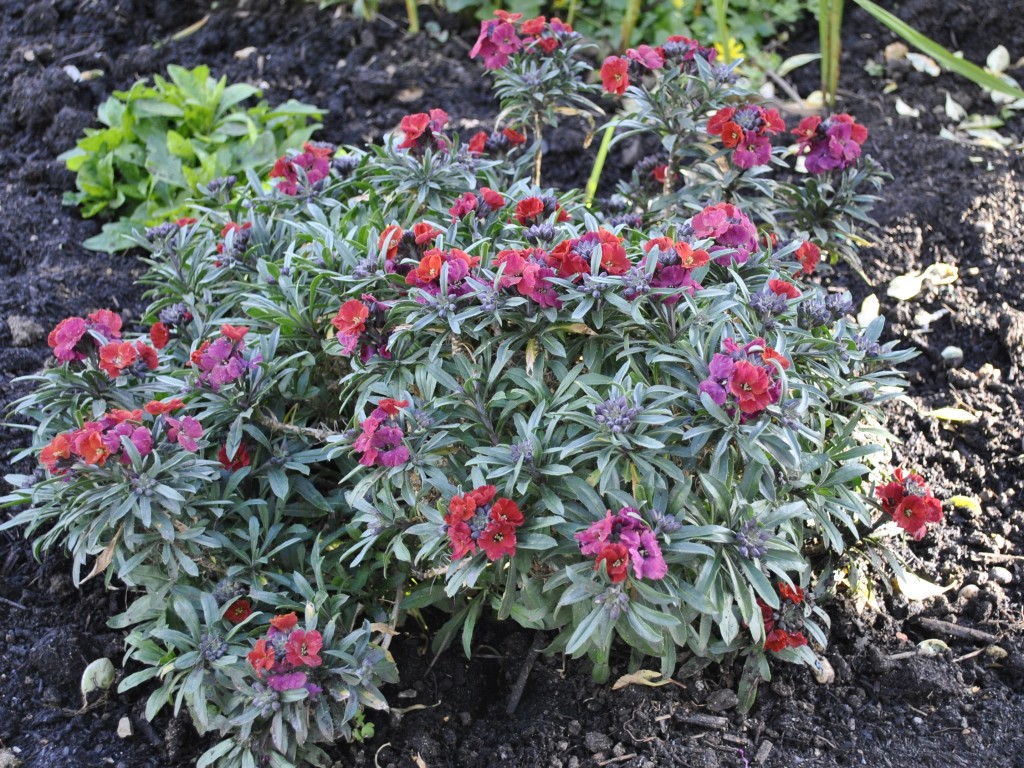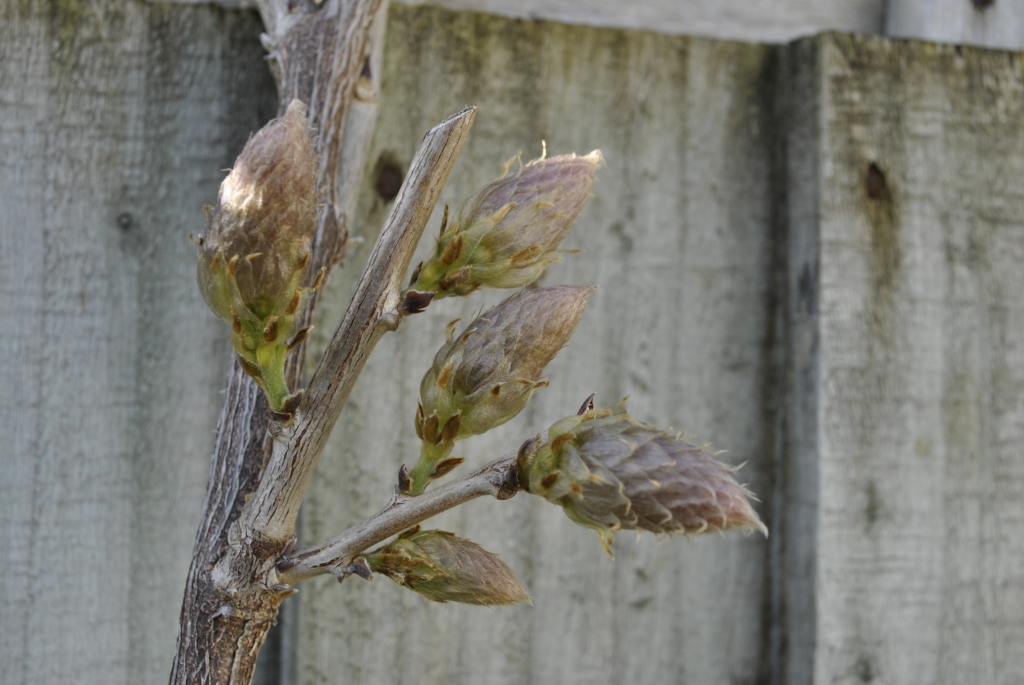
I rather pretentiously call this ‘The Long Walk’ because it seems a long way from the front door to the garage! However, it does give me a chance to inspect a lot of plants in the ‘long border’ and my big pots in the gravel margin next to the bungalow.
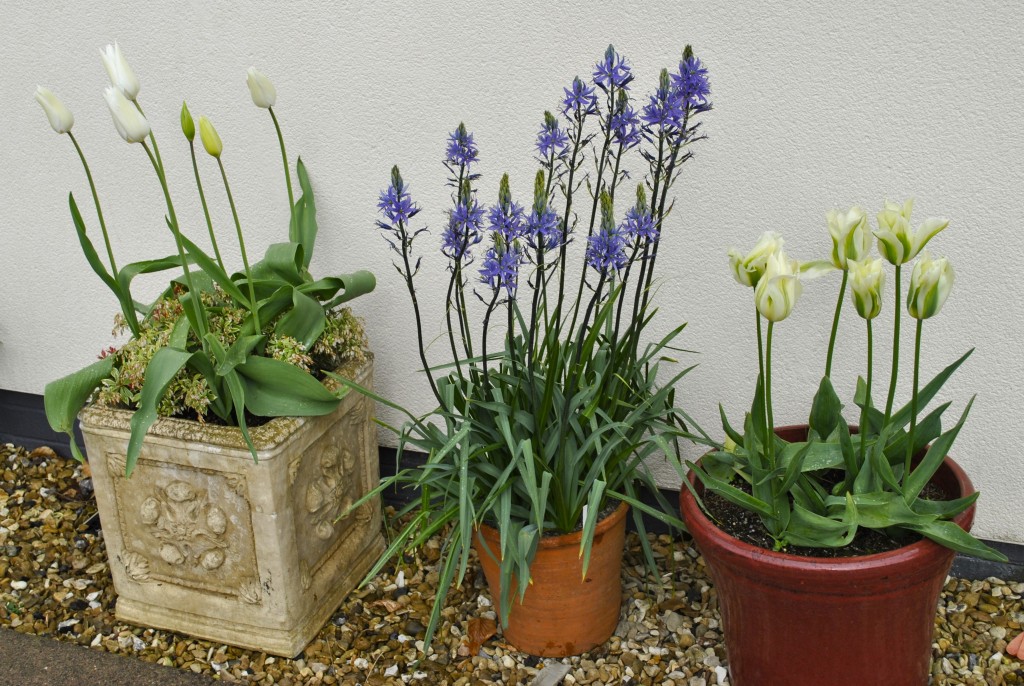
And talking of pots, the Camassias have worked well again this year flowering at the same time as some lovely creamy/white/green tulips. If you haven’t already tried Camassias in pots, I strongly recommend them. Just keep them well watered.

Their starry lavender blue flowers open over a long period and are good with Narcissus too.

Erysimum ‘Red Jep’ is excellent this year. She obviously likes the cooler, wet conditions, the early feed of Growmore in February and the mulch of composted green waste. I tend to find that Erysimums are quite short lived, 3 years max before they go leggy and die on me, so I take a lot of cuttings in the early summer. They also have a nasty habit of snapping in the wind when the stems mature and become brittle.
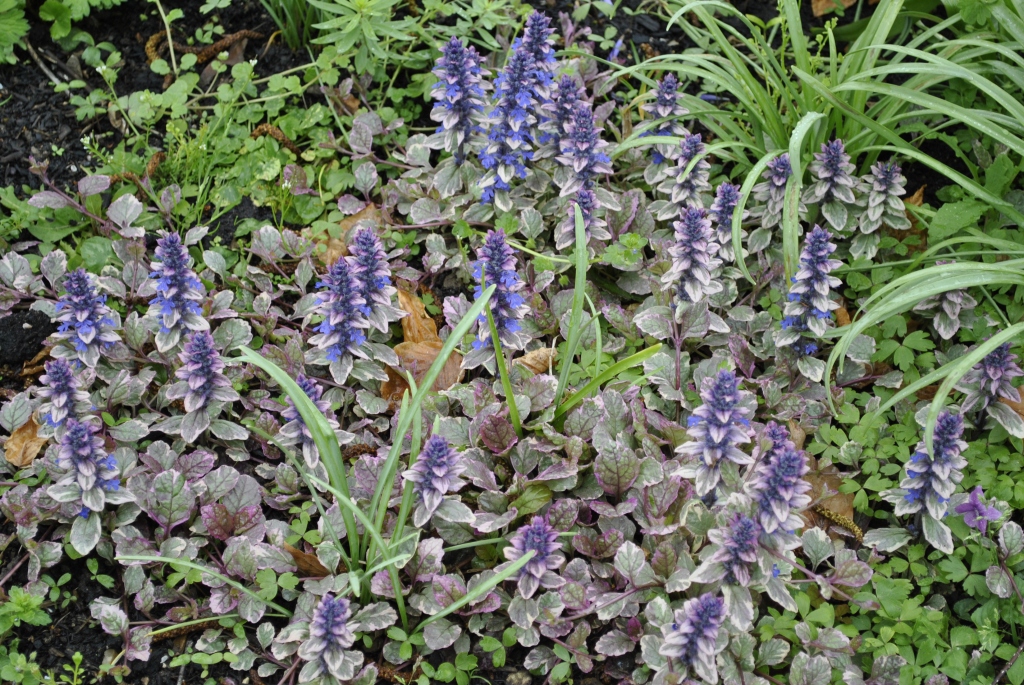
This is Ajuga reptans ‘Burgundy Glow’, a lighter coloured greeny/purple leaved version of the common Bugle plant. It creeps and roots itself as it goes which is a very useful habit. The bright blue flowers at this time of year are a charming addition to the early Spring border and mix well with the Anemone blanda, Narcissus and the strappy leaves of ‘going over’ Snowdrops.
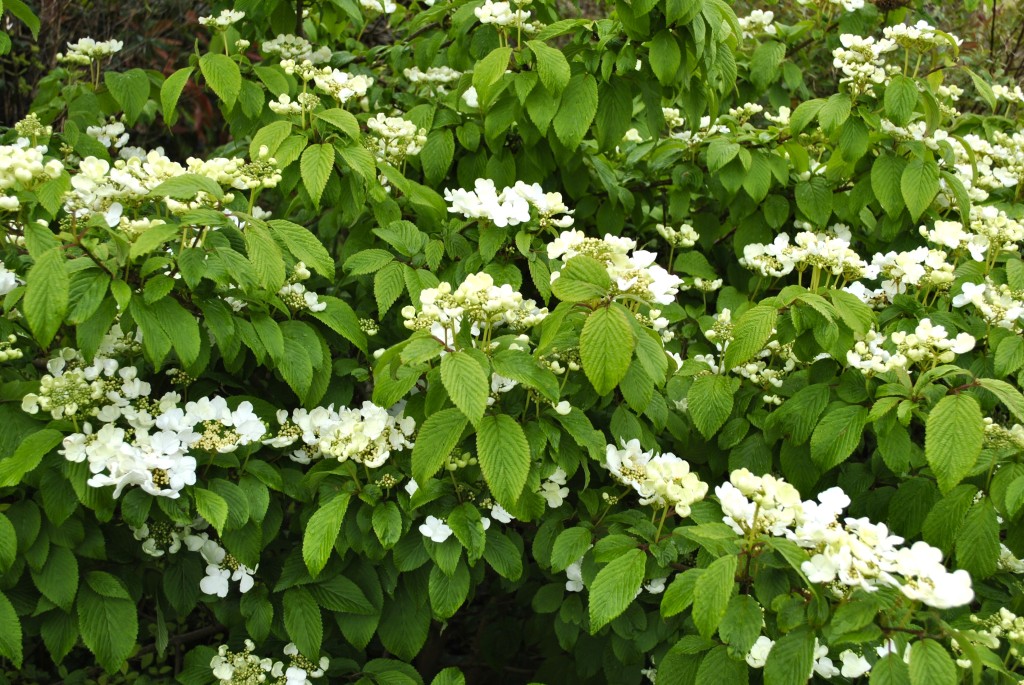
Viburnums are such good shrubs, totally hardy and bombproof, flowering early like this Viburnum plicatum ‘Mariesii’ which is such a joy. The flowers themselves are tiny and almost insignificant compared to the creamy white bracts surrounding them. A glorious sight at this time of year.

The purple Honesty, Lunaria annua, has been exceptional this year and is all around the hedgerows of Gloucestershire at the moment. I am hoping that my seedlings of the cultivated forms ‘Chedglow’ and ‘Corfu Blue’, will be just as good when they flower next Spring.
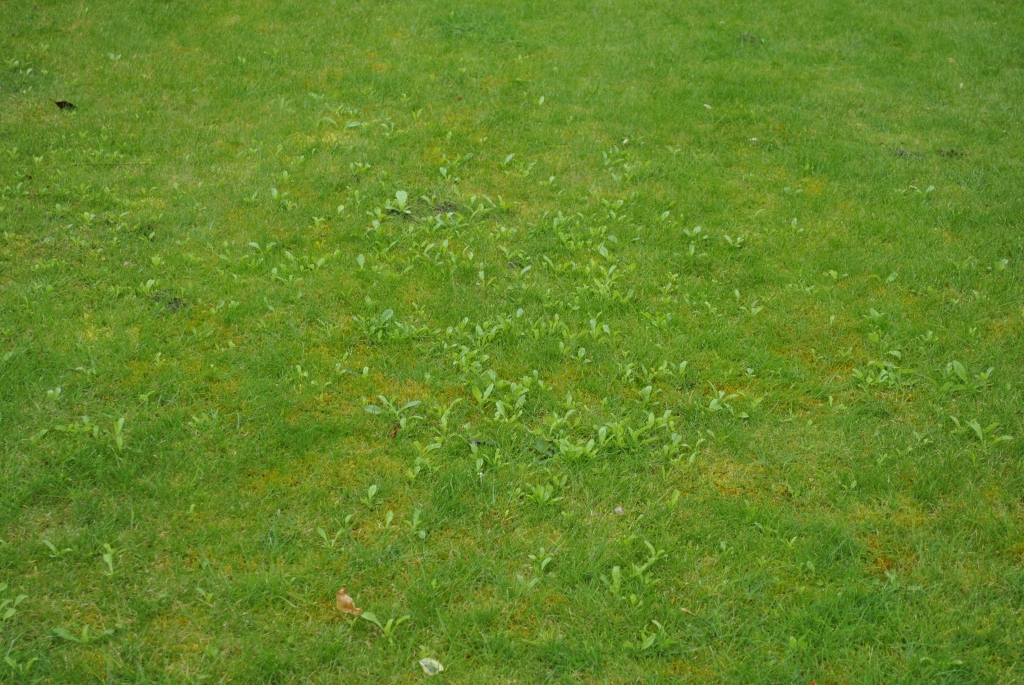
Finally, the long wet winter has taken its toll on the lawn. It is full of moss, weeds and Scabious seedlings from the adjacent border. Time for some Weed ‘n Feed, scarification and aeration methinks. There are those that consider such things unnecessary and ecologically unsound, and I understand their point of view. I am passionate about ecology and wildlife, but I am also a gardener, and when I see the millions of dandelions and daisies in the fields around here, I don’t think my little lawn is significant in the grand scheme of things.
Have a great weekend
David


